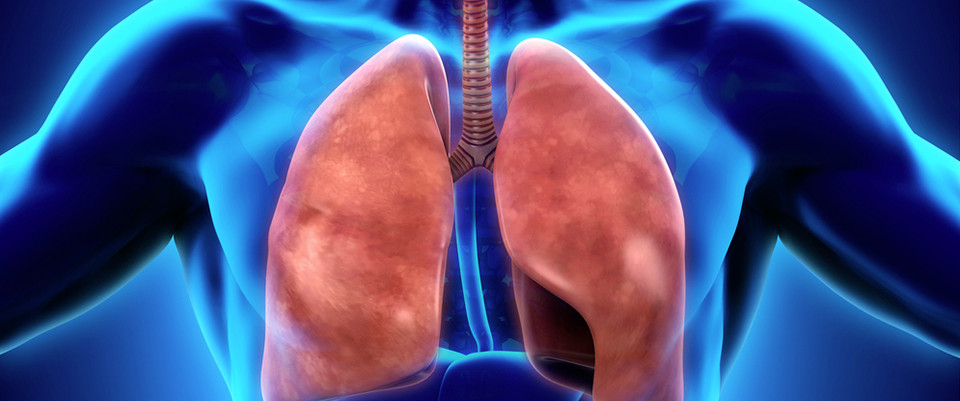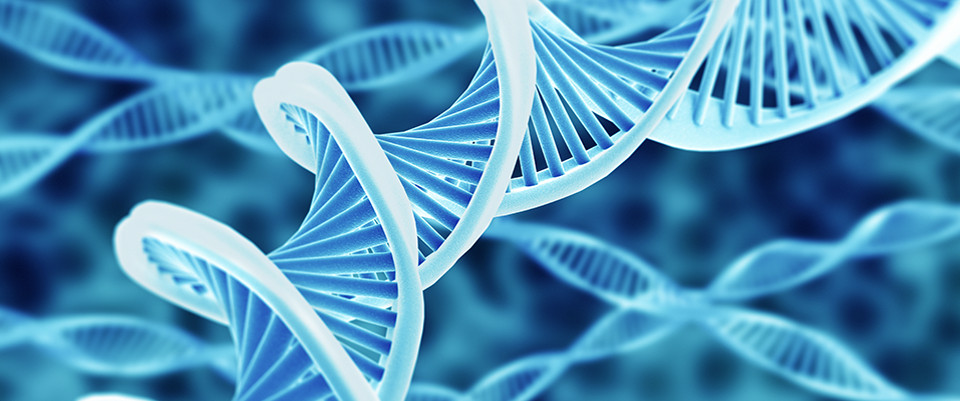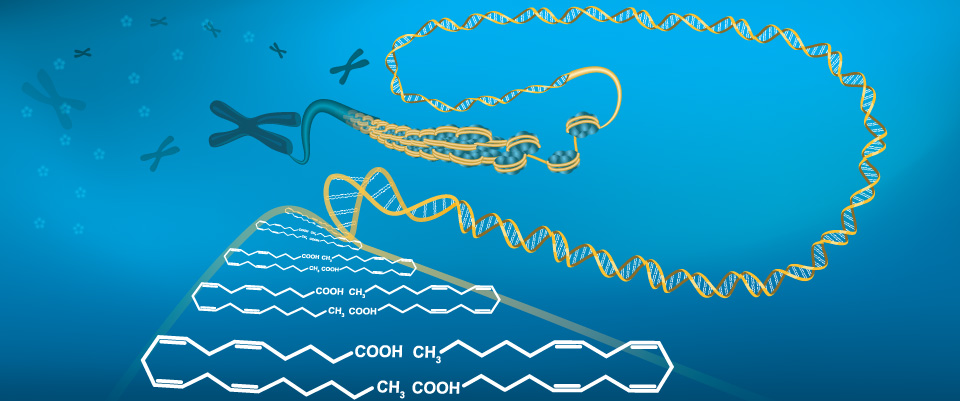PubMed
Multi-Omics Investigation into Acute Myocardial Infarction: An Integrative Method Revealing Interconnections amongst the Metabolome, Lipidome, Glycome, and Metallome
Metabolites. 2022 Nov 8;12(11):1080. doi: 10.3390/metabo12111080.ABSTRACTAcute myocardial infarction (AMI) is a leading cause of mortality and morbidity worldwide. This work aims to investigate the translational potential of a multi-omics study (comprising metabolomics, lipidomics, glycomics, and metallomics) in revealing biomechanistic insights into AMI. Following the N-glycomics and metallomics studies performed by our group previously, untargeted metabolomic and lipidomic profiles were generated and analysed in this work via the use of a simultaneous metabolite/lipid extraction and liquid chromatography-tandem mass spectrometry (LC-MS/MS) analysis workflow. The workflow was applied to blood plasma samples from AMI cases (n = 101) and age-matched healthy controls (n = 66). The annotated metabolomic (number of features, n = 27) and lipidomic (n = 48) profiles, along with the glycomic (n = 37) and metallomic (n = 30) profiles of the same set of AMI and healthy samples were integrated and analysed. The integration method used here works by identifying a linear combination of maximally correlated features across the four omics datasets, via utilising both block-partial least squares-discriminant analysis (block-PLS-DA) based on sparse generalised canonical correlation analysis. Based on the multi-omics mapping of biomolecular interconnections, several postulations were derived. These include the potential roles of glycerophospholipids in N-glycan-modulated immunoregulatory effects, as well as the augmentation of the importance of Ca-ATPases in cardiovascular conditions, while also suggesting contributions of phosphatidylethanolamine in their functions. Moreover, it was shown that combining the four omics datasets synergistically enhanced the classifier performance in discriminating between AMI and healthy subjects. Fresh and intriguing insights into AMI, otherwise undetected via single-omics analysis, were revealed in this multi-omics study. Taken together, we provide evidence that a multi-omics strategy may synergistically reinforce and enhance our understanding of diseases.PMID:36355163 | DOI:10.3390/metabo12111080
Metabolomics Characterization of Scleractinia Corals with Different Life-History Strategies: A Case Study about <em>Pocillopora meandrina</em> and <em>Seriatopora hystrix</em> in the South China Sea
Metabolites. 2022 Nov 8;12(11):1079. doi: 10.3390/metabo12111079.ABSTRACTLife-history strategies play a critical role in susceptibility to environmental stresses for Scleractinia coral. Metabolomics, which is capable of determining the metabolic responses of biological systems to genetic and environmental changes, is competent for the characterization of species' biological traits. In this study, two coral species (Pocillopora meandrina and Seriatopora hystrix in the South China Sea) with different life-history strategies ("competitive" and "weedy") were targeted, and untargeted mass spectrometry metabolomics combined with molecular networking was applied to characterize their differential metabolic pathways. The results show that lyso-platelet activating factors (lyso-PAFs), diacylglyceryl carboxyhydroxymethylcholine (DGCC), aromatic amino acids, and sulfhydryl compounds were more enriched in P. meandrina, whereas new phospholipids, dehydrated phosphoglycerol dihydroceramide (de-PG DHC), monoacylglycerol (MAG), fatty acids (FA) (C < 18), short peptides, and guanidine compounds were more enriched in S. hystrix. The metabolic pathways involved immune response, energy metabolism, cellular membrane structure regulation, oxidative stress system, secondary metabolite synthesis, etc. While the immune system (lysoPAF) and secondary metabolite synthesis (aromatic amino acids and sulfhydryl compounds) facilitates fast growth and resistance to environmental stressors of P. meandrina, the cell membrane structure (structural lipids), energy storage (storage lipids), oxidative stress system (short peptides), and secondary metabolite synthesis (guanidine compounds) are beneficial to the survival of S. hystrix in harsh conditions. This study contributes to the understanding of the potential molecular traits underlying life-history strategies of different coral species.PMID:36355162 | DOI:10.3390/metabo12111079
Proteomic and Metabolomic Evaluation of Insect- and Herbicide-Resistant Maize Seeds
Metabolites. 2022 Nov 7;12(11):1078. doi: 10.3390/metabo12111078.ABSTRACTLabel-free quantitative proteomic (LFQ) and widely targeted metabolomic analyses were applied in the safety evaluation of three genetically modified (GM) maize varieties, BBL, BFL-1, and BFL-2, in addition to their corresponding non-GM parent maize. A total of 76, 40, and 25 differentially expressed proteins (DEPs) were screened out in BBL, BFL-1, and BFL-2, respectively, and their abundance compared was with that in their non-GM parents. Kyoto Encyclopedia of Genes and Genomes (KEGG) pathway enrichment analysis showed that most of the DEPs participate in biosynthesis of secondary metabolites, biosynthesis of amino acids, and metabolic pathways. Metabolomic analyses revealed 145, 178, and 88 differentially accumulated metabolites (DAMs) in the BBL/ZH58, BFL-1/ZH58, and BFL-2/ZH58×CH72 comparisons, respectively. KEGG pathway enrichment analysis showed that most of the DAMs are involved in biosynthesis of amino acids, and in arginine and proline metabolism. Three co-DEPs and 11 co-DAMs were identified in the seeds of these GM maize lines. The proteomic profiling of seeds showed that the GM maize varieties were not dramatically different from their non-GM control. Similarly, the metabolomic profiling of seeds showed no dramatic changes in the GM/non-GM maize varieties compared with the GM/GM and non-GM/non-GM maize varieties. The genetic background of the transgenic maize was found to have some influence on its proteomic and metabolomic profiles.PMID:36355161 | DOI:10.3390/metabo12111078
Metabolomic Study of a Rat Model of Retinal Detachment
Metabolites. 2022 Nov 7;12(11):1077. doi: 10.3390/metabo12111077.ABSTRACTRetinal detachment is a serious ocular disease leading to photoreceptor degeneration and vision loss. However, the mechanism of photoreceptor degeneration remains unclear. The aim of this study was to investigate the altered metabolism pathway and physiological changes after retinal detachment. Eight-week-old male SD rats were fed, and the model of retinal detachment was established by injecting hyaluronic acid into the retinal space. The rats were euthanized 3 days after RD, and the retinal tissues were sectioned for analysis. Untargeted lipid chromatography-mass spectrometry lipidomic was performed to analyze the metabolite changes. A total of 90 significant metabolites (34 in anionic and 56 in cationic models) were detected after retinal detachment. The main pathways were (1) histidine metabolism; (2) phenylalanine, tyrosine, and tryptophan biosynthesis; and (3) glycine, serine, and threonine metabolism. The key genes corresponding to each metabolic pathway were verified from the Gene Expression Omnibus (GEO) database of human retinal samples. The results indicated that the production of histamine by histidine decarboxylase from histidine reduced after RD (p < 0.05). Xanthine, hypoxanthine, guanine, and guanosine decreased after RD (p < 0.05). Decreased xanthine and hypoxanthine may reduce the antioxidant ability. The decreased guanosine could not provide enough sources for inosine monophosphate production. Tyrosine is an important neurotransmitter and was significantly reduced after RD (p < 0.05). Citrate was significantly reduced with the increase of ATP-citrate lyase enzyme (ACLY) (p < 0.05). We inferred that lipid oxidation might increase rather than lipid biogenesis. Thus, this study highlighted the main changes of metabolite and physiological process after RD. The results may provide important information for photoreceptor degeneration.PMID:36355160 | DOI:10.3390/metabo12111077
Revealing the Pathogenesis of Salt-Sensitive Hypertension in Dahl Salt-Sensitive Rats through Integrated Multi-Omics Analysis
Metabolites. 2022 Nov 7;12(11):1076. doi: 10.3390/metabo12111076.ABSTRACTSalt-induced renal metabolism dysfunction is an important mechanism of salt-sensitive hypertension. Given that the gut-liver axis is the first hit of a high-salt diet (HSD), we aimed to identify the extra-renal mechanism from hepatic metabolism and gut microbiota, and attempted to relieve the salt-induced metabolic dysfunctions by curcumin. Untargeted metabolomics analysis was performed to identify the changes in hepatic metabolic pathways, and integrated analysis was employed to reveal the relationship between hepatic metabolic dysfunction and gut microbial composition. HSD induced significant increase in fumaric acid, l-lactic acid, creatinine, l-alanine, glycine, and l-cysteine levels, and amino acids metabolism pathways associated with glycolysis were significantly altered, including alanine, aspartate, and glutamate metabolism; glycine, serine, and threonine metabolism, which were involved in the regulation of blood pressure. Integrated multi-omics analysis revealed that changes in Paraprevotella, Erysipelotrichaceae, and genera from Clostridiales are associated with metabolic disorders. Gene functional predication analysis based on 16S Ribosomal RNA sequences showed that the dysfunction in hepatic metabolism were correlated with enhanced lipopolysaccharide (LPS) biosynthesis and apoptosis in gut microbes. Curcumin (50 mg/kg/d) might reduce gut microbes-associated LPS biosynthesis and apoptosis, partially reverse metabolic dysfunction, ameliorate renal oxidative stress, and protect against salt-sensitive hypertension.PMID:36355159 | DOI:10.3390/metabo12111076
Mapping of Urinary Volatile Organic Compounds by a Rapid Analytical Method Using Gas Chromatography Coupled to Ion Mobility Spectrometry (GC-IMS)
Metabolites. 2022 Nov 5;12(11):1072. doi: 10.3390/metabo12111072.ABSTRACTVolatile organic compounds (VOCs) are a differentiated class of molecules, continuously generated in the human body and released as products of metabolic pathways. Their concentrations vary depending on pathophysiological conditions. They are detectable in a wide variety of biological samples, such as exhaled breath, faeces, and urine. In particular, urine represents an easily accessible specimen widely used in clinics. The most used techniques for VOCs detections are expensive and time-consuming, thus not allowing for rapid clinical analysis. In this perspective, the aim of this study is a comprehensive characterisation of the urine volatilome by the development of an alternative rapid analytical method. Briefly, 115 urine samples are collected; sample treatment is not needed. VOCs are detected in the urine headspace using gas chromatography coupled to ion mobility spectrometry (GC-IMS) by an extremely fast analysis (10 min). The method is analytically validated; the analysis is sensitive and robust with results comparable to those reported with other techniques. Twenty-three molecules are identified, including ketones, aldehydes, alcohols, and sulphur compounds, whose concentration is altered in several pathological states such as cancer and metabolic disorders. Therefore, it opens new perspectives for fast diagnosis and screening, showing great potential for clinical applications.PMID:36355153 | DOI:10.3390/metabo12111072
Human Milk from Tandem Feeding Dyads Does Not Differ in Metabolite and Metataxonomic Features When Compared to Single Nursling Dyads under Six Months of Age
Metabolites. 2022 Nov 4;12(11):1069. doi: 10.3390/metabo12111069.ABSTRACTGiven the long-term advantages of exclusive breastfeeding to infants and their mothers, there is both an individual and public health benefit to its promotion and support. Data on the composition of human milk over the course of a full period of lactation for a single nursling is sparse, but data on human milk composition during tandem feeding (feeding children of different ages from different pregnancies) is almost entirely absent. This leaves an important knowledge gap that potentially endangers the ability of parents to make a fully informed choice on infant feeding. We compared the metataxonomic and metabolite fingerprints of human milk samples from 15 tandem feeding dyads to that collected from ten exclusively breastfeeding single nursling dyads where the nursling is under six months of age. Uniquely, our cohort also included three tandem feeding nursling dyads where each child showed a preferential side for feeding-allowing a direct comparison between human milk compositions for different aged nurslings. Across our analysis of volume, total fat, estimation of total microbial load, metabolite fingerprinting, and metataxonomics, we showed no statistically significant differences between tandem feeding and single nursling dyads. This included comparisons of preferential side nurslings of different ages. Together, our findings support the practice of tandem feeding of nurslings, even when feeding an infant under six months.PMID:36355152 | DOI:10.3390/metabo12111069
Changes of Plasma Tris(hydroxymethyl)aminomethane and 5-Guanidino-3-methyl-2-oxopentanoic Acid as Biomarkers of Heart Remodeling after Left Ventricular Assist Device Support
Metabolites. 2022 Nov 4;12(11):1068. doi: 10.3390/metabo12111068.ABSTRACTCardiac function is closely related to heart metabolism. Heart failure patients undergoing LVAD support have shown varying degrees of remodeling of both cardiac function and morphology. However, the metabolic changes in patients with different outcomes are unclear. This study aimed to identify metabolic differences and evaluate metabolomics-based biomarkers in patients with non-improved/improved cardiac function after LVAD support. Sixteen patients were enrolled in this study. Plasma samples were analyzed by using untargeted metabolomic approaches. Multivariate statistical analysis and a Mann-Whitney U-test was performed to clarify the separation in metabolites and to identify changes in plasma metabolites between the two groups, respectively. The efficacy of candidate biomarkers was tested by the area under the curve receiver operating characteristic curve. Using the Metabolomics Standards Initiative level 2, a total of 1542 and 619 metabolites were detected in the positive and negative ion modes, respectively. Enrichment analysis showed that metabolites in improved cardiac function patients were mainly involved in carbohydrate metabolism and amino acid metabolism. Metabolites from non-improved cardiac function patients were mainly involved in hormone metabolism. Furthermore, we found tris(hydroxymethyl)aminomethane and 5-guanidino-3-methyl-2-oxopentanoic acid could serve as biomarkers to predict whether a patient's cardiac function would improve after LVAD support.PMID:36355151 | DOI:10.3390/metabo12111068
Isotope-Assisted Metabolic Flux Analysis: A Powerful Technique to Gain New Insights into the Human Metabolome in Health and Disease
Metabolites. 2022 Nov 4;12(11):1066. doi: 10.3390/metabo12111066.ABSTRACTCell metabolism represents the coordinated changes in genes, proteins, and metabolites that occur in health and disease. The metabolic fluxome, which includes both intracellular and extracellular metabolic reaction rates (fluxes), therefore provides a powerful, integrated description of cellular phenotype. However, intracellular fluxes cannot be directly measured. Instead, flux quantification requires sophisticated mathematical and computational analysis of data from isotope labeling experiments. In this review, we describe isotope-assisted metabolic flux analysis (iMFA), a rigorous computational approach to fluxome quantification that integrates metabolic network models and experimental data to generate quantitative metabolic flux maps. We highlight practical considerations for implementing iMFA in mammalian models, as well as iMFA applications in in vitro and in vivo studies of physiology and disease. Finally, we identify promising new frontiers in iMFA which may enable us to fully unlock the potential of iMFA in biomedical research.PMID:36355149 | DOI:10.3390/metabo12111066
Bioengineering of <em>Escherichia coli Nissle 1917</em> for Production and Excretion of Spermidine, a Key Metabolite in Human Health
Metabolites. 2022 Nov 2;12(11):1061. doi: 10.3390/metabo12111061.ABSTRACTMicrobiota-derived metabolites have biological importance for their host. Spermidine, a metabolite described for its protective effect in age-related diseases, is now studied for its role in the resolution of inflammation and gut homeostasis. Strategies to modulate its production in the gastrointestinal tract are of interest to increase host spermidine intakes. Here, we show that metabolic engineering can be used to increase spermidine production by the probiotic Escherichia coli Nissle 1917 (EcN), used in humans. First, we found that increasing the expression of genes involved in polyamine biosynthesis, namely the S-adenosylmethionine synthase speD and the spermidine synthase speE, resulted in an increase in spermidine produced and excreted by our engineered bacteria. The major drawback of this first attempt was the production of acetylated forms of spermidine. Next, we propose to solve this problem by increasing the expression of the spermidine exporter system MdtI/MdtJ. This second strategy had a major impact on the spermidine profile found in the culture supernatant. Our results demonstrate, for the first time, the feasibility of rationally engineering bacterial probiotic strains to increase their ability to deliver the microbiota-derived metabolite, spermidine. This work illustrates how metabolomic and synthetic biology can be used to design and improve engineered Live Biotherapeutic Products that have the potential to be used in personalized medicine.PMID:36355144 | DOI:10.3390/metabo12111061
Plasma Metabolome Alterations Discriminate between COVID-19 and Non-COVID-19 Pneumonia
Metabolites. 2022 Nov 2;12(11):1058. doi: 10.3390/metabo12111058.ABSTRACTPneumonia is a common cause of morbidity and mortality and is most often caused by bacterial pathogens. COVID-19 is characterized by lung infection with potential progressive organ failure. The systemic consequences of both disease on the systemic blood metabolome are not fully understood. The aim of this study was to compare the blood metabolome of both diseases and we hypothesize that plasma metabolomics may help to identify the systemic effects of these diseases. Therefore, we profiled the plasma metabolome of 43 cases of COVID-19 pneumonia, 23 cases of non-COVID-19 pneumonia, and 26 controls using a non-targeted approach. Metabolic alterations differentiating the three groups were detected, with specific metabolic changes distinguishing the two types of pneumonia groups. A comparison of venous and arterial blood plasma samples from the same subjects revealed the distinct metabolic effects of pulmonary pneumonia. In addition, a machine learning signature of four metabolites was predictive of the disease outcome of COVID-19 subjects with an area under the curve (AUC) of 86 ± 10 %. Overall, the results of this study uncover systemic metabolic changes that could be linked to the etiology of COVID-19 pneumonia and non-COVID-19 pneumonia.PMID:36355140 | DOI:10.3390/metabo12111058
Urine Metabolites Enable Fast Detection of COVID-19 Using Mass Spectrometry
Metabolites. 2022 Nov 2;12(11):1056. doi: 10.3390/metabo12111056.ABSTRACTThe COVID-19 pandemic boosted the development of diagnostic tests to meet patient needs and provide accurate, sensitive, and fast disease detection. Despite rapid advancements, limitations related to turnaround time, varying performance metrics due to different sampling sites, illness duration, co-infections, and the need for particular reagents still exist. As an alternative diagnostic test, we present urine analysis through flow-injection-tandem mass spectrometry (FIA-MS/MS) as a powerful approach for COVID-19 diagnosis, targeting the detection of amino acids and acylcarnitines. We adapted a method that is widely used for newborn screening tests on dried blood for urine samples in order to detect metabolites related to COVID-19 infection. We analyzed samples from 246 volunteers with diagnostic confirmation via PCR. Urine samples were self-collected, diluted, and analyzed with a run time of 4 min. A Lasso statistical classifier was built using 75/25% data for training/validation sets and achieved high diagnostic performances: 97/90% sensitivity, 95/100% specificity, and 95/97.2% accuracy. Additionally, we predicted on two withheld sets composed of suspected hospitalized/symptomatic COVID-19-PCR negative patients and patients out of the optimal time-frame collection for PCR diagnosis, with promising results. Altogether, we show that the benchmarked FIA-MS/MS method is promising for COVID-19 screening and diagnosis, and is also potentially useful after the peak viral load has passed.PMID:36355139 | DOI:10.3390/metabo12111056
Metabolomic Signatures in Doxorubicin-Induced Metabolites Characterization, Metabolic Inhibition, and Signaling Pathway Mechanisms in Colon Cancer HCT116 Cells
Metabolites. 2022 Oct 31;12(11):1047. doi: 10.3390/metabo12111047.ABSTRACTDoxorubicin (DOX) is a chemotherapeutic agent is used for various cancer cells. To characterize the chemical structural components and metabolic inhibition, we applied a DOX to HCT116 colon cancer cells using an independent metabolites profiling approach. Chemical metabolomics has been involved in the new drug delivery systems. Metabolomics profiling of DOX-applied HCT116 colon cancer cellular metabolisms is rare. We used 1H nuclear magnetic resonance (NMR) spectroscopy in this study to clarify how DOX exposure affected HCT116 colon cancer cells. Metabolomics profiling in HCT116 cells detects 50 metabolites. Tracking metabolites can reveal pathway activities. HCT116 colon cancer cells were evenly treated with different concentrations of DOX for 24 h. The endogenous metabolites were identified by comparison with healthy cells. We found that acetate, glucose, glutamate, glutamine, sn-glycero-3-phosphocholine, valine, methionine, and isoleucine were increased. Metabolic expression of alanine, choline, fumarate, taurine, o-phosphocholine, inosine, lysine, and phenylalanine was decreased in HCT116 cancer cells. The metabolic phenotypic expression is markedly altered during a high dose of DOX. It is the first time that there is a metabolite pool and phenotypic expression in colon cancer cells. Targeting the DOX-metabolite axis may be a novel strategy for improving the curative effect of DOX-based therapy for colon cancer cells. These methods facilitate the routine metabolomic analysis of cancer cells.PMID:36355130 | DOI:10.3390/metabo12111047
Identification of Candidate Salivary, Urinary and Serum Metabolic Biomarkers for High Litter Size Potential in Sows (<em>Sus scrofa</em>)
Metabolites. 2022 Oct 30;12(11):1045. doi: 10.3390/metabo12111045.ABSTRACTThe selection of sows that are reproductively fit and produce large litters of piglets is imperative for success in the pork industry. Currently, low heritability of reproductive and litter-related traits and unfavourable genetic correlations are slowing the improvement of pig selection efficiency. The integration of biomarkers as a supplement or alternative to the use of genetic markers may permit the optimization and increase of selection protocol efficiency. Metabolite biomarkers are an advantageous class of biomarkers that can facilitate the identification of cellular processes implicated in reproductive condition. Metabolism and metabolic biomarkers have been previously implicated in studies of female mammalian fertility, however a systematic analysis across multiple biofluids in infertile and high reproductive potential phenotypes has not been explored. In the current study, the serum, urinary and salivary metabolomes of infertile (INF) sows and high reproductive potential (HRP) sows with a live litter size ≥ 13 piglets were examined using LC-MS/MS techniques, and a data pipeline was used to highlight possible metabolite reproductive biomarkers discriminating the reproductive groups. The metabolomes of HRP and INF sows were distinct, including significant alterations in amino acid, fatty acid, membrane lipid and steroid hormone metabolism. Carnitines and fatty acid related metabolites were most discriminatory in separating and classifying the HRP and INF sows based on their biofluid metabolome. It appears that urine is a superior biofluid than saliva and serum for potentially predicting the reproductive potential level of a given female pig based on the performance of the resultant biomarker models. This study lays the groundwork for improving gilt and sow selection protocols using metabolomics as a tool for the prediction of reproductive potential.PMID:36355128 | DOI:10.3390/metabo12111045
Metabolomic Response throughout 16 Weeks of Combined Aerobic and Resistance Exercise Training in Older Women with Metabolic Syndrome
Metabolites. 2022 Oct 30;12(11):1041. doi: 10.3390/metabo12111041.ABSTRACTIncreases in longevity and obesity have led to a higher prevalence of Metabolic Syndrome (MetS) and several chronic conditions, such as hypertension. The prevalence of MetS and hypertension increases with advancing age and their detrimental effects on health can be attenuated by physical activity. Combined aerobic and resistance exercise training (CT) is recommended to maintain good health in older adults and is known to generate important metabolic adaptations. In this study we performed a metabolomics analysis, based on Hydrogen Nuclear Magnetic Resonance (1H NMR), to investigate the kinetics of changes in metabolism in non-physically active older women with MetS in response to 16 weeks of CT. A subset of women with MetS were selected from a larger randomized trial (that included men and women without MetS), with 12 participants on CT and 13 from the Control Group (CG). CT comprised walking/running at 63% of VO2max, three times/week, and resistance training (RT), consisting of 15 repetitions of seven exercises at moderate intensity, twice/week. Serum metabolomic profile was analysed at baseline (0W), 4 (4W), 8 (8W), 12 (12W) and 16 weeks (16W) for CT or CG. Cardiorespiratory fitness, RT load, blood pressure, body composition, lipid and glycaemic profile were also assessed. After 16 weeks CT increased cardiorespiratory fitness (13.1%, p < 0.05) and RT load (from 48% in the lat pulldown to 160% in the leg press, p < 0.05), but there were no changes in MetS parameters, such as body composition (Body Mass, Body Mass Index (BMI), body fat percentage and waist circumference), blood pressure, lipid and glycaemic profile. However, we identified potential higher substrate to the tricarboxylic acid cycle (increase in 2-Oxobutyrate from 0W (0.0029 ± 0.0009) to 4W (0.0038 ± 0.0011) and 8W (0.0041 ± 0.0015), p < 0.05), followed by alterations (different from 0W, p < 0.05) in the production of ketone bodies (3-Hydroxybutyrate, 0W (0.0717 ± 0.0377) to 16W (0.0397 ± 0.0331), and Acetoacetate, 0W (0.0441 ± 0.0240) to 16W (0.0239 ± 0.0141)), which together might explain the known improvement in fatty acid oxidation with exercise. There was also a late increase in ornithine at 16W of CT. Further studies are needed to investigate the association between these metabolic pathways and clinical outcomes in this population.PMID:36355124 | DOI:10.3390/metabo12111041
Metabolic Phenotyping Study of Mouse Brain Following Microbiome Disruption by <em>C.</em><em>difficile</em> Colonization
Metabolites. 2022 Oct 28;12(11):1039. doi: 10.3390/metabo12111039.ABSTRACTClostridioides difficile infection (CDI) is responsible for an increasing number of cases of post-antibiotic diarrhea worldwide, which has high severity and mortality among hospitalized elderly patients. The disruption of gut microbiota due to antibacterial medication facilitates the intestinal colonization of C. difficile. In the present study, a murine model was used to investigate the potential effects of antibiotic administration and subsequent colonization by C. difficile, as well as the effects of three different 10-day treatments (metronidazole, probiotics, and fecal microbiota transplantation), on the brain metabolome for the first time. Four different metabolomic-based methods (targeted HILIC-MS/MS, untargeted RP-LC-HRMS/MS, targeted GC-MS/MS, and untargeted GC-MS) were applied, resulting in the identification of 217 unique metabolites in the brain extracts, mainly glycerophospholipids, glycerolipids, amino acids, carbohydrates, and fatty acids. Univariate and multivariate statistical analysis revealed that CDI, as well as the subsequent treatments, altered significantly several brain metabolites, probably due to gut dysbiosis, and affected the brain through the gut-brain axis. Notably, none of the therapeutic approaches completely restored the brain metabolic profile to the original, healthy, and non-infected phenotype, even after 10 days of treatment.PMID:36355122 | DOI:10.3390/metabo12111039
Metabolomic Analysis of Exosomes Derived from Lung Cancer Cell Line H460 Treated with SH003 and Docetaxel
Metabolites. 2022 Oct 28;12(11):1037. doi: 10.3390/metabo12111037.ABSTRACTExosomes released from tumor cells treated with cancer-targeting drugs reflect altered metabolic processes within the cells. Therefore, metabolites in exosomes can be used as markers to predict the therapeutic response or identify therapeutic targets. In this study, metabolite changes in exosomes were investigated by co-administration of the herbal extract SH003 and docetaxel (DTX), which exert a synergistic anti-cancer effect on lung cancer cells. Exosomes released from cells treated with SH003 and DTX were purified, and untargeted metabolic profiling was performed by liquid chromatography-tandem mass spectrometry. Analysis of altered metabolic-based pathways showed that the combined treatment synergistically increased pyrimidine metabolism compared with single-drug treatment. Additionally, xenobiotic metabolism by cytochrome P450 was specifically increased in cells treated with the combination. However, the released exosomes and increased metabolites in exosomes did not affect the anti-cancer effect of SH003 and DTX. Therefore, our study suggests that metabolite profiling can be used to evaluate the efficacy of combined treatments. Furthermore, such exosome-based metabolism may facilitate understanding the physiological endpoints of combination therapy in human biofluids.PMID:36355120 | DOI:10.3390/metabo12111037
Congruence and Complementarity of Differential Mobility Spectrometry and NMR Spectroscopy for Plasma Lipidomics
Metabolites. 2022 Oct 27;12(11):1030. doi: 10.3390/metabo12111030.ABSTRACTThe lipid composition of lipoprotein particles is determinative of their respective formation and function. In turn, the combination and correlation of nuclear magnetic resonance (NMR)-based lipoprotein measurements with mass spectrometry (MS)-based lipidomics is an appealing technological combination for a better understanding of lipid metabolism in health and disease. Here, we developed a combined workflow for subsequent NMR- and MS-based analysis on single sample aliquots of human plasma. We evaluated the quantitative agreement of the two platforms for lipid quantification and benchmarked our combined workflow. We investigated the congruence and complementarity between the platforms in order to facilitate a better understanding of patho-physiological lipoprotein and lipid alterations. We evaluated the correlation and agreement between the platforms. Next, we compared lipid class concentrations between healthy controls and rheumatoid arthritis patient samples to investigate the consensus among the platforms on differentiating the two groups. Finally, we performed correlation analysis between all measured lipoprotein particles and lipid species. We found excellent agreement and correlation (r > 0.8) between the platforms and their respective diagnostic performance. Additionally, we generated correlation maps detailing lipoprotein/lipid interactions and describe disease-relevant correlations.PMID:36355113 | DOI:10.3390/metabo12111030
Metabolomic Profiles Associated with Obesity and Periodontitis during Pregnancy: Cross-Sectional Study with Proton Nuclear Magnetic Resonance (<sup>1</sup>H-NMR)-Based Analysis
Metabolites. 2022 Oct 27;12(11):1029. doi: 10.3390/metabo12111029.ABSTRACTThis study aimed to elucidate the metabolomic signature associated with obesity and periodontitis during pregnancy in plasma and saliva biofluids. Ninety-eight pregnant women were divided into: with obesity and periodontitis (OP = 20), with obesity but without periodontitis (OWP = 27), with normal BMI but with periodontitis (NP = 21), with normal BMI and without periodontitis (NWP = 30). Saliva and plasma were analyzed by 1H-NMR for metabolites identification. Partial Least Squares-Discriminant Analysis (PLS-DA), Sparse PLS-DA (sPLS-DA), and Variable Importance of Projection (VIP) were performed. ANOVA and Pearson's correlation were applied (p < 0.05). Plasmatic analysis indicated the levels of glucose (p = 0.041) and phenylalanine (p = 0.015) were positively correlated with periodontal parameters and BMI, respectively. In saliva, periodontitis was mainly associated with high levels of acetic acid (p = 0.024), isovaleric acid, butyric acid, leucine, valine, isoleucine, and propionic acid (p < 0.001). High salivary concentrations of glycine (p = 0.015), succinic acid (p = 0.015), and lactate (p = 0.026) were associated with obesity. Saliva demonstrated a more elucidative difference than plasma, indicating the glucose-alanine cycle, alanine metabolism, valine, leucine and isoleucine degradation, glutamate metabolism, and Warburg effect as the main metabolic pathways.PMID:36355112 | DOI:10.3390/metabo12111029
Signatures of Mitochondrial Dysfunction and Impaired Fatty Acid Metabolism in Plasma of Patients with Post-Acute Sequelae of COVID-19 (PASC)
Metabolites. 2022 Oct 26;12(11):1026. doi: 10.3390/metabo12111026.ABSTRACTExercise intolerance is a major manifestation of post-acute sequelae of severe acute respiratory syndrome coronavirus infection (PASC, or "long-COVID"). Exercise intolerance in PASC is associated with higher arterial blood lactate accumulation and lower fatty acid oxidation rates during graded exercise tests to volitional exertion, suggesting altered metabolism and mitochondrial dysfunction. It remains unclear whether the profound disturbances in metabolism that have been identified in plasma from patients suffering from acute coronavirus disease 2019 (COVID-19) are also present in PASC. To bridge this gap, individuals with a history of previous acute COVID-19 infection that did not require hospitalization were enrolled at National Jewish Health (Denver, CO, USA) and were grouped into those that developed PASC (n = 29) and those that fully recovered (n = 16). Plasma samples from the two groups were analyzed via mass spectrometry-based untargeted metabolomics and compared against plasma metabolic profiles of healthy control individuals (n = 30). Observational demographic and clinical data were retrospectively abstracted from the medical record. Compared to plasma of healthy controls or individuals who recovered from COVID-19, PASC plasma exhibited significantly higher free- and carnitine-conjugated mono-, poly-, and highly unsaturated fatty acids, accompanied by markedly lower levels of mono-, di- and tricarboxylates (pyruvate, lactate, citrate, succinate, and malate), polyamines (spermine) and taurine. Plasma from individuals who fully recovered from COVID-19 exhibited an intermediary metabolic phenotype, with milder disturbances in fatty acid metabolism and higher levels of spermine and taurine. Of note, depletion of tryptophan-a hallmark of disease severity in COVID-19-is not normalized in PASC patients, despite normalization of kynurenine levels-a tryptophan metabolite that predicts mortality in hospitalized COVID-19 patients. In conclusion, PASC plasma metabolites are indicative of altered fatty acid metabolism and dysfunctional mitochondria-dependent lipid catabolism. These metabolic profiles obtained at rest are consistent with previously reported mitochondrial dysfunction during exercise, and may pave the way for therapeutic intervention focused on restoring mitochondrial fat-burning capacity.PMID:36355108 | DOI:10.3390/metabo12111026











